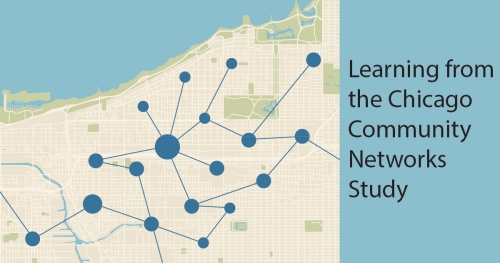Chicago’s New Communities Program

Overview
Can community-led efforts improve outcomes for residents at the neighborhood level? This is a critical question for policy and practice. For over a decade, The John D. and Catherine T. MacArthur Foundation has supported the Local Initiatives Support Corporation of Chicago (LISC Chicago) to make neighborhoods safer, support young people, improve schools, and preserve affordable housing. MDRC is currently documenting the legacy of MacArthur’s investment.
Additional Project Details
Agenda, Scope, and Goals
In partnership with LISC Chicago, the MacArthur Foundation, and the School of Social Service Administration at the University of Chicago, MDRC is building a body of knowledge about the achievements and challenges of the New Communities Program (NCP). NCP helped community groups form partnerships with each other and with powerful actors outside the neighborhood, in order to serve children and families, support local businesses, reduce violence, and build and preserve affordable housing. MDRC’s research is examining MacArthur’s legacy by answering the following questions:
- How do neighborhood networks contribute to community development over time? Through mixed-method research, MDRC is examining how partnerships are sustained, how they change, and how they contribute to the collective implementation of housing, safety, and educational projects. Given the field’s interest in developing “resilient” communities, MDRC is particularly attuned to ways that networks respond to external shocks, such as funding cuts or school closings.
- How do local organizations contribute to changes in schools, safety, and housing? Although the research is not an experiment and therefore cannot definitively test the impacts of NCP, MDRC is developing new methodologies to illuminate how community groups serve students, promote safety, and allow longer-term affordability.
- What capabilities do funders, intermediaries, and community organizations build upon to launch ambitious community change initiatives? The NCP experience offers important lessons to funders, policymakers, and practitioners about how to operate large-scale community change projects.
Design, Sites, and Data Sources
MDRC’s mixed-method study builds on the Chicago Community Networks survey, which provides an unprecedented opportunity to understand the contributions of relationships to an array of community activities. This survey is one of the most extensive ever collected on community networks, and permits a variety of analyses about the structure of relationships and their contributions to the implementation of community projects. The research also involves individual interviews and structured observations to understand how local networks operate, and analyses of a comprehensive database of community indicators to examine how neighborhoods change. This longitudinal, citywide database makes it possible to track neighborhood indicators over a long period of time and across places.
Featured Work
Learning from the Chicago Community Networks Study








